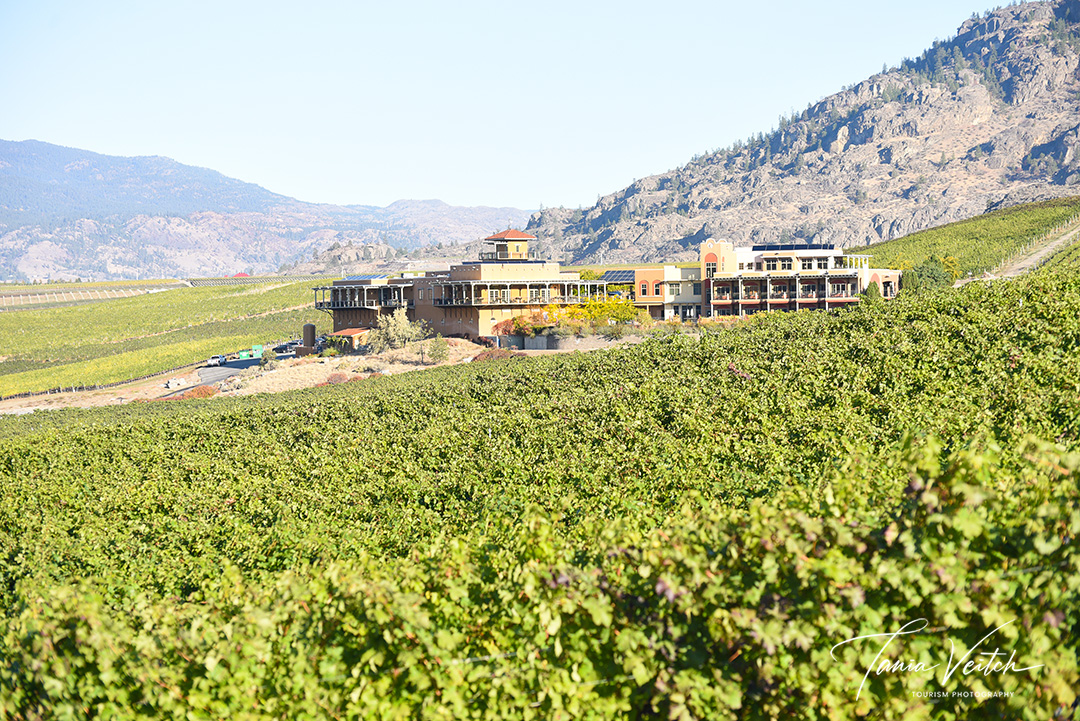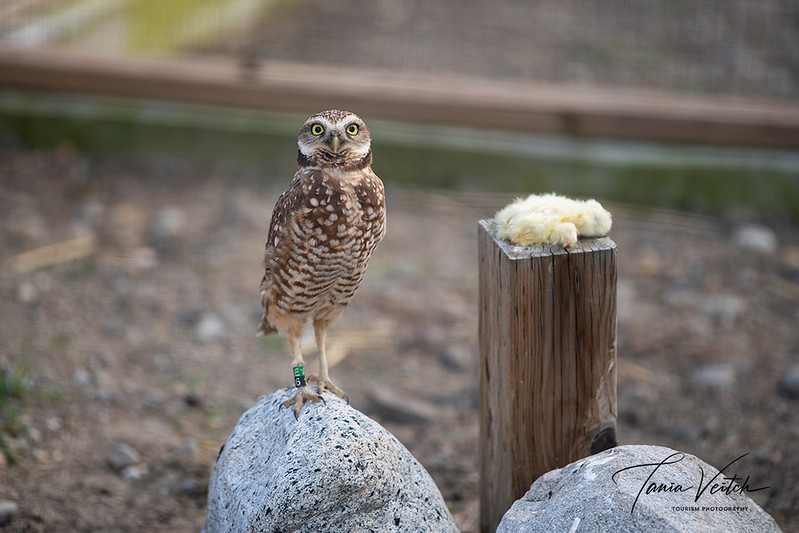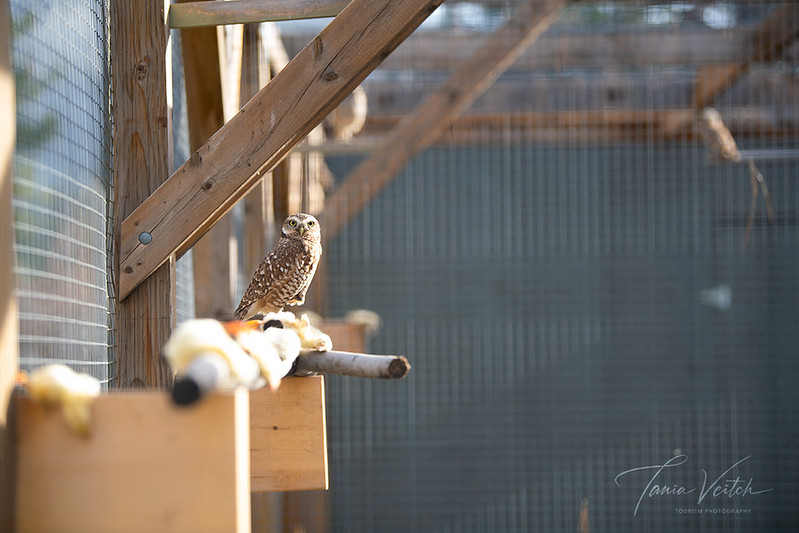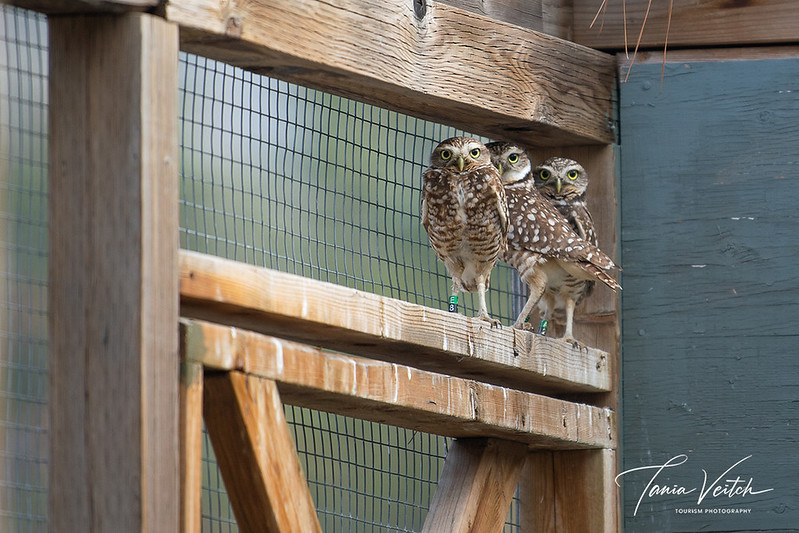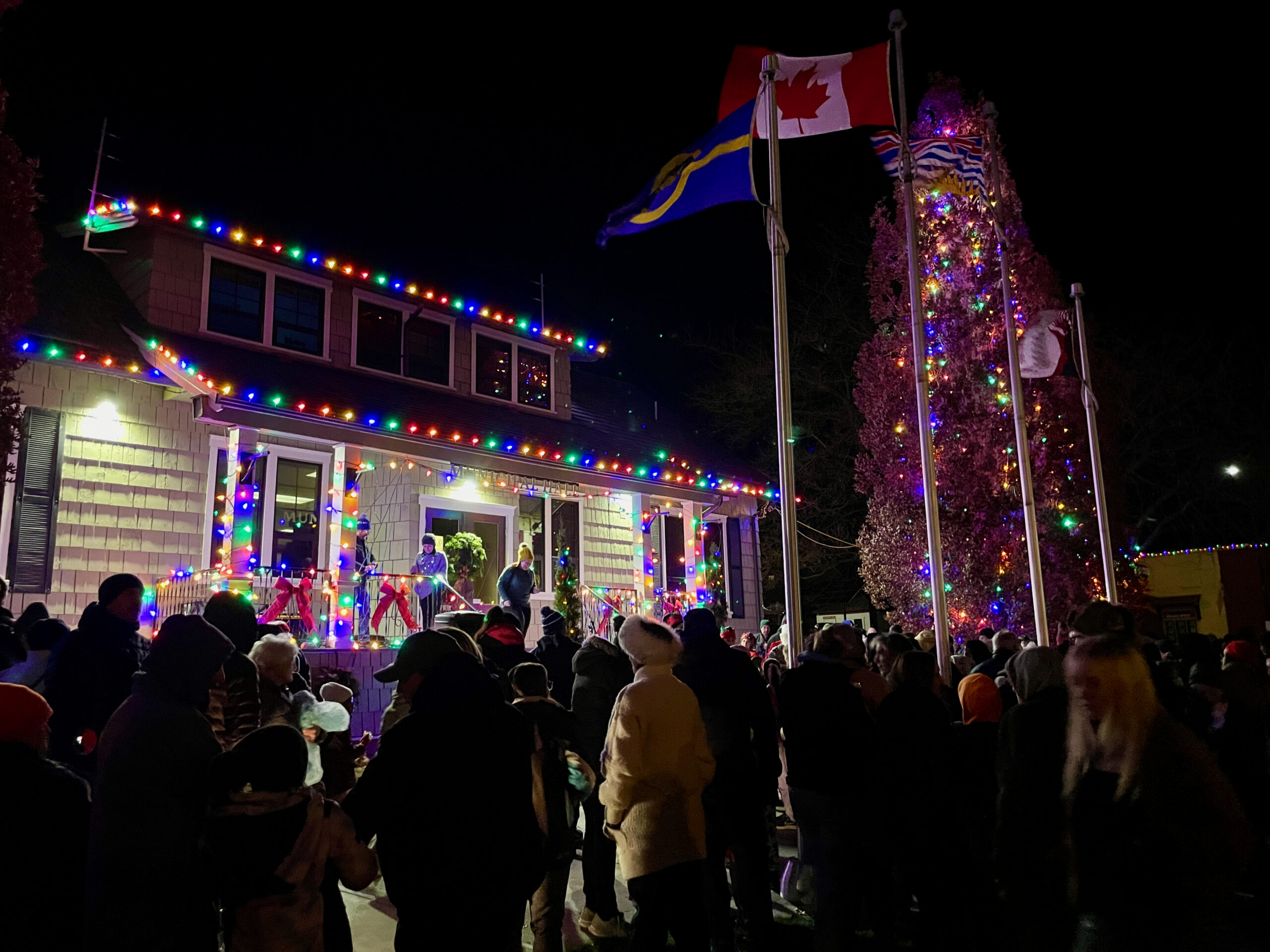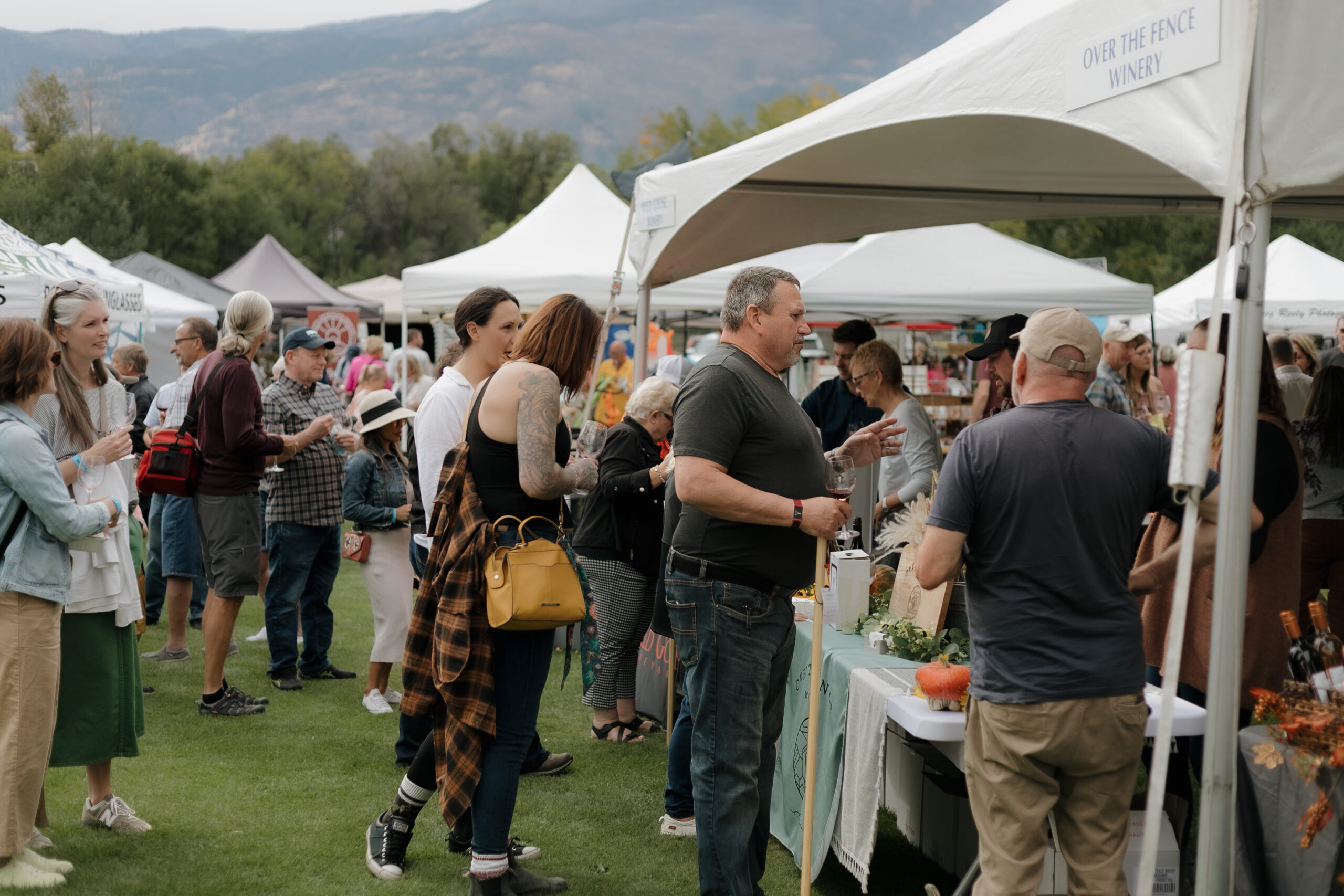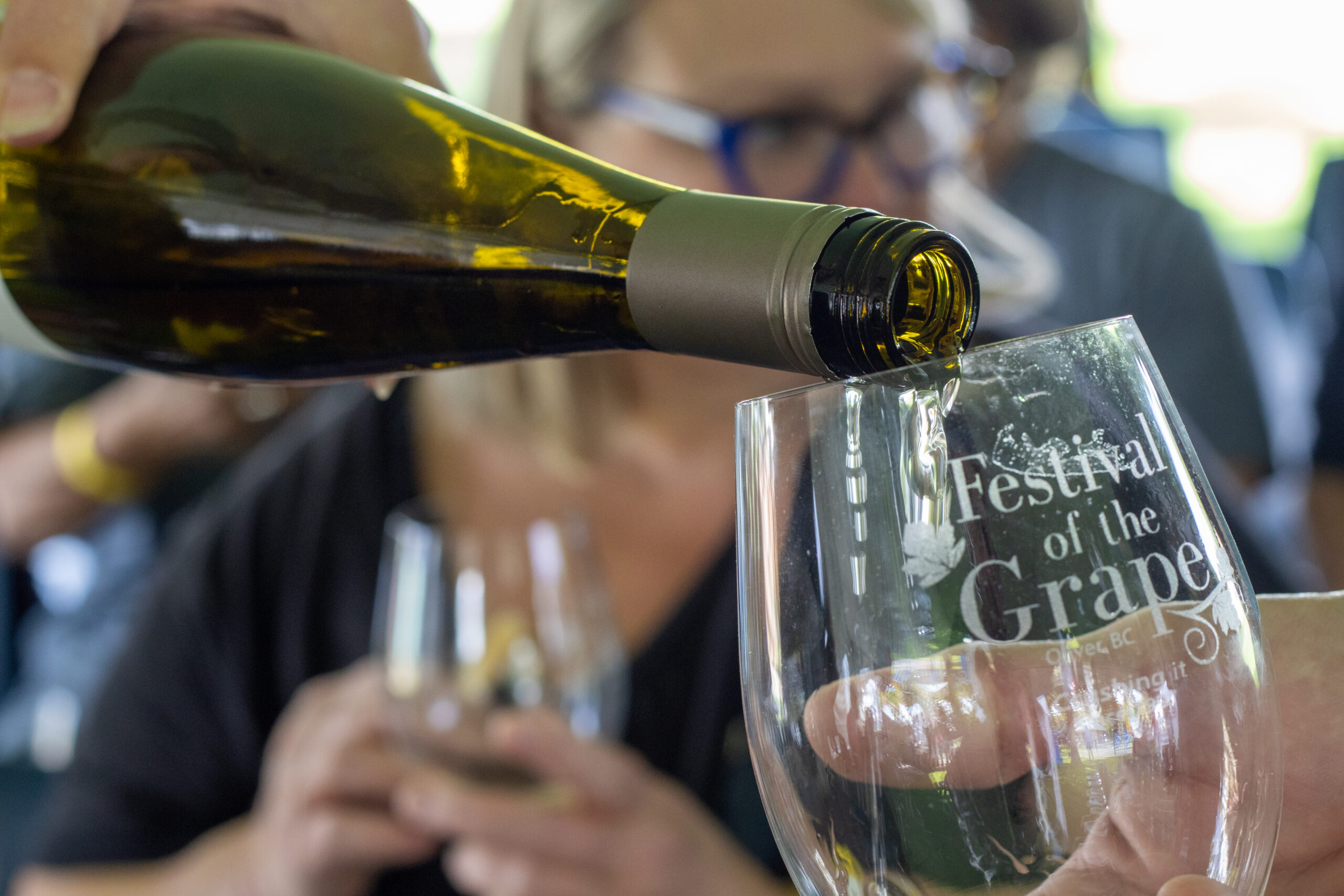From Roadtrip to Winery
Jim and Midge Wyse were living a comfortable and contented life in North Vancouver at the beginning of the 1990s. They didn’t know that very soon, they’d be planting a seed that would quite literally germinate into a highly-revered and successful family enterprise in the Canadian wine industry.
In 1992, Jim had road-tripped to the Okanagan for the first time when he detoured from his initial plans to look at a winery in Peachland that had come onto the market. Although it was a non-starter, the idea of owning a vineyard whetted Jim’s appetite. It quickly led him to some people in the wine industry who knew about the South Okanagan.
From the fateful purchase of a 100-acre vineyard (and then another 120) to a sign posted by the Ministry of Environment, began a wonderful story pairing premium wine in BC with the come-back of an endangered owl.
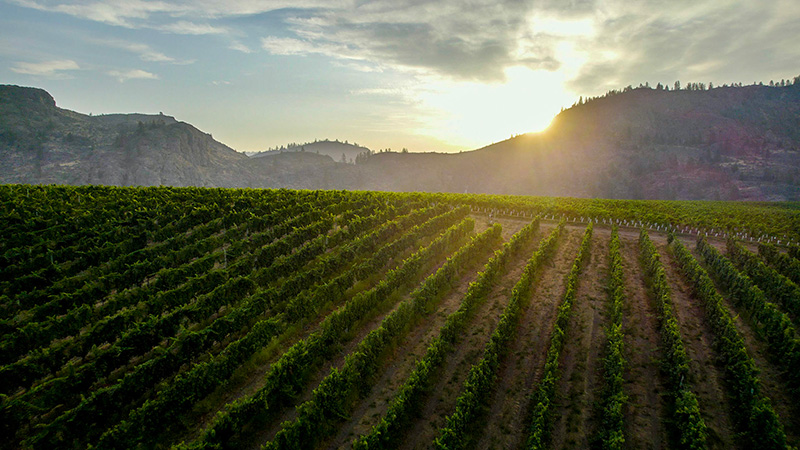 Photo credit Kenton Gilchrist (Blade 9 Films)
Photo credit Kenton Gilchrist (Blade 9 Films)
A Charming Character
Burrowing owls aren’t your typical owls that perch on a tree branch scanning open fields for prey. These little ones, standing only 23-28cm tall, perch on the ground. They eat insects. Their long skinny legs make them look as if they’re sporting stilts.
They will flatten against the ground or run if in danger rather than fly away. Their distress cry even mimics a rattlesnake to scare the pants off any predators.
Rather than build nests, because they honestly don’t know how to do that, burrowing owls will “borrow” a vacant gopher hole, and well, too bad if you’re a gopher. If you had planned on returning you should have locked the door!
But the gophers didn’t return. To farmers, they were a pest and so they got rid of them. With fewer gophers, there were fewer holes and, unfortunately for the owl, fewer places for them to live.
As a result, the burrowing owl was declared extirpated in BC in 1980, thirteen years before the Wyse’s purchased 220 acres, and then joined forces with the Burrowing Owl Conservation Society of BC to bring them back.
Go Wine-Tasting & Feed Owls!
Did you know that 100% of all wine tasting fees go directly to the Burrowing Owl Conservation Society of BC to help feed owls? The total contributions to date exceed $1.5 million.
You can feel good knowing that when you visit Burrowing Owl Estate Winery for a tasting, that you are also helping to re-establish the burrowing owl in British Columbia!
Twenty to thirty years before the Wyse’s ventured into the business of growing grapes in 1993, the Okanagan Valley grew French hybrids.
North American grapes were extremely hardy and could resist disease and cold Canadian winters, so grape-growers began cross-breeding them with French varieties such as chardonnay and cabernet grapes, and then labeling them with French-sounding names like Chelios and Maréchal Foch.
“These French hybrids didn’t make great wine. They had a reputation of being a “pariah” or an outcast, so to placate grape-growers, in 1988, following the first free trade agreement (FTA), Prime Minister Brian Mulroney gave grape-growers a subsidy of $8K per acre to pull out the French hybrids and replant their vineyards with French varieties,” explained Jim.
As a result, properties sold for cheap.
“Before 1988, the local BC growers were producing only the French hybrids because they were protected by trade barriers,” Jim continued.
“The FTA removed those barriers so that the French varieties could now be imported by the wineries. In an effort to have the local growers convert their vineyards to vinifera, Mulroney offered a cash incentive of $8K per acre to pull out the hybrids and hopefully replant with vinifera. The growers pulled the hybrids, took the money and sold their vineyards for as little as $2K per acre.”
“We came in accidentally at that time,” admitted Jim. “We didn’t quite get the bottom of the market which was about $2K per acre. When we got in, it was $4K (per acre). That was expensive (in comparison).” Jim said with a chuckle.
Nowadays, an acre of prime grape-growing land in Oliver goes for $300K.
After consulting with some knowledgeable locals, Jim and Midge began planting vinifera grapes, which are the European varieties.
“We didn’t know any better, so we planted all these vinifera and it worked,” Jim admitted. “The people who we sold (grapes) to were happy to have, for the first time, Cabernet, Chardonnay, and Merlot, and all those French varieties, from Canadian growers.”
 Photo credit Kenton Gilchrist (Blade 9 Films)
Photo credit Kenton Gilchrist (Blade 9 Films)
A year after purchasing the properties into a ‘numbered company’, Jim and Midge decided it was time to put a name to their vineyard.
During the late 1980s, the Ministry of Environment had acquired some owls from Washington State in exchange for some mountain goats. They created artificial burrows in hopes that they would breed and the offspring would return and begin re-establishing their population here.
Their plan ultimately failed after only a few years, however the idea survived and was picked up by the Burrowing Owl Conservation Society of BC in 1992.
In 1993, the Ministry posted a sign on Black Sage Road across the street from the Wyse’s vineyard at the intersection with Burrowing Owl Place. One side spoke of the extirpated burrowing owl, and the other side mentioned the endangered Western Rattlesnake.
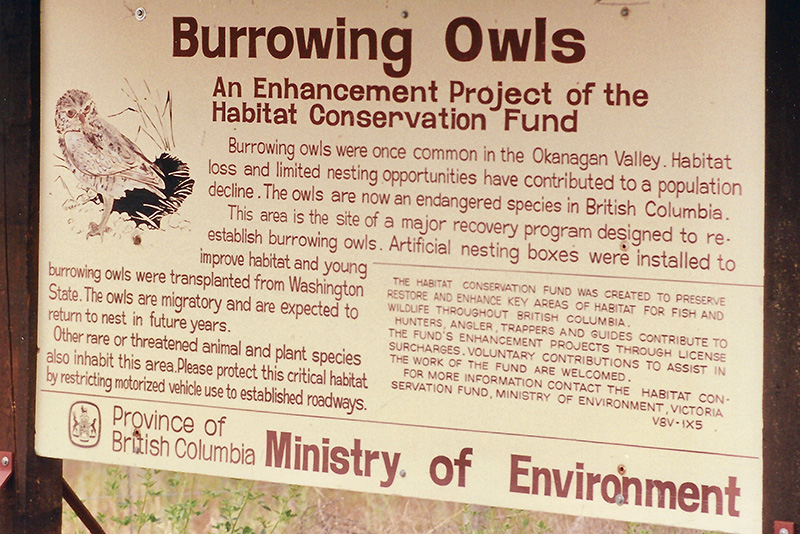
“We’ve always been partial birds,” Jim said. “My mother was a wonderful birder in her day, so we said let’s call it Burrowing Owl. We didn’t know what they looked like, but if they were local at one time, let’s at least recognize that by the name of the vineyard.”
The sign (above) is the inspiration behind the name the beloved Burrowing Owl Estate Winery and the frame is used as the winery entrance sign today. Neither Jim nor Midge had ever seen a burrowing owl in person before they named the vineyard and the subsequent winery.
A photo and article on the front page of the Vancouver Sun changed that.
The photo was of a man with a burrowing owl perched on his shoulder. He was pleading with the Vancouver Parks Board to keep the Stanley Park Zoo, which was slated for closure, open for certain features.
The man’s name was Mike MacKintosh, curator of the zoo. He was explaining a program that the zoo had developed to breed owls and then free the offspring.
That same afternoon, Jim contacted Mike and expressed his interest in meeting a burrowing owl. It was love at first sight when they met a charming and very tame little owl that Mike had raised by hand, for educational purposes.
Instantly, Jim and Midge joined Mike’s new society, began attending meetings, and digging holes for artificial burrows. Mike’s society, known as the Burrowing Owl Conservation Society of BC (BOCSBC), has grown with three breeding centres scattered around the southern half of BC including in Vancouver, Kamloops, and Oliver.
“Mike had huge numbers of volunteers digging artificial burrows all up and down the Nicola Valley and all around the grasslands in Kamloops,” Jim said. “He hadn’t done much in the South Okanagan at that time but in the last 10 or so years we’ve changed that.”
Ranchers, who were not a fan of holes due to the risk of their livestock breaking a leg, have generally been very accepting of the program. The artificial burrow design, developed over time, is safe for cows. The burrows are also made with better atmospheric material and can last for approximately 15 – 20 years.
The Wyse’s are very passionate about the program and have put money where their hearts are. They’ve dedicated much time and continue to donate 100% of their tasting fees to the program.
“It [BOCSBC] has installed more than 800 artificial burrows across the province,” Jim informed, “and has significantly expanded the available habitat across a number of the southern interior grasslands historically preferred by burrowing owls.”
“In addition, rather than simply putting all the owls out in the field, the Society has kept several “breeders” back in 3-breeding centres. One of these is located here in Oliver,” continued Jim.
“These three centres produce about 100+ young owls every year,” Jim explained, “and it is these “children” that are released into the wild the following spring as one-year-olds, and they, in turn, produce additional offspring. It is estimated that approximately 300 burrowing owls migrate south every fall.”
Although the program has been highly successful at breeding and providing habitat for the owls, there are still problems that are being further studied.
“We do not fully understand what happens to these birds over the winter,” Jim admitted, “and sadly, the return rate continues to be unsustainably low. The Society is about to embark on new research to try and determine the cause for this migration problem. In the beginning, Jim and Midge were advised not to bother spending money on actually making wine. Not only is it a huge investment to get into the winery business, but Canadian wines were not at all popular in 1993.
Jim said, “We had no concept that this [grape-growing venture] was going to turn out as it has but after five years, we found out that most of the grapes we were selling were winning prizes in the hands of the purchasers.”
 Photo credit Kenton Gilchrist (Blade 9 Films)
Photo credit Kenton Gilchrist (Blade 9 Films)
So, with that in mind, the Wyse’s started planning. If they were going to do this, they were going to do it right.
“We planned initially to build a 10,000-case winery and we wanted it to be ultra-premium,” said Jim.
“We wanted to be very proud of what we had produced. We were one of the first ones to fully embrace Canadian grape-growing. We made wine from our product and in our vineyard exclusively. We had complete control so there was no reason not to do all the things that you need to do to make premium wine.”
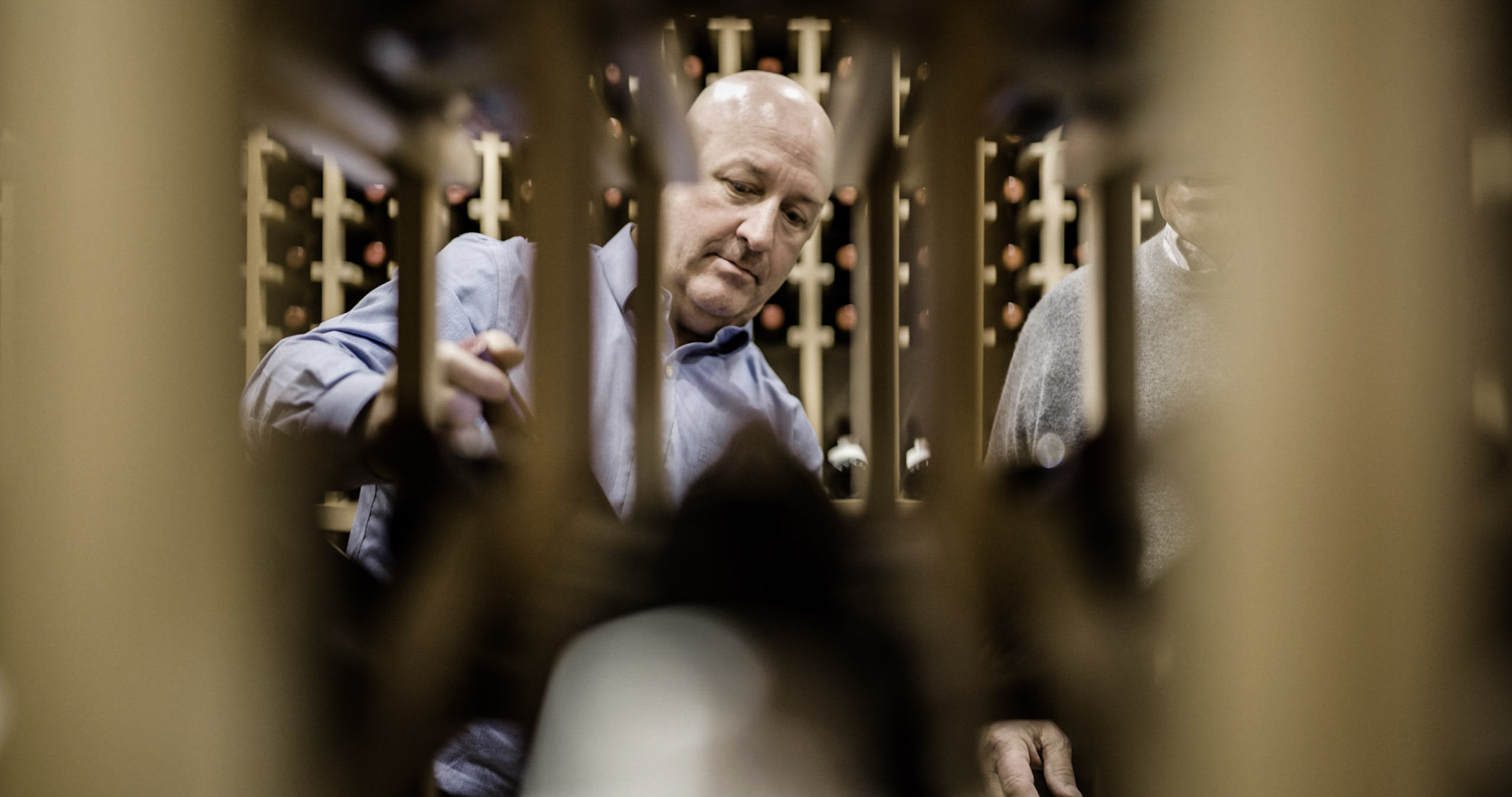 Photo credit Kenton Gilchrist (Blade 9 Films)
Photo credit Kenton Gilchrist (Blade 9 Films)
They produced 4000 cases the first year in 1997 off site. Their second vintage was produced at the new winery in 1998.
The wines were well-received right from the beginning. Early sales were not to the public. Most of the wine produced went to the Vancouver and Lower Mainland restaurant and hotel market.
Jim remarked, “It was quite a change to see a local wine up there with some of the top French wines on wine lists at the Hotel Vancouver for example.” Burrowing Owl Estate Winery wines competed along with Australia, New Zealand, California, and Chile in annual wine competitions. They won Best of Class in California at the LA County Fair and also did very well in the Pacific Rim Wine Competition.
“We were up against some of the best wines in the world and we were getting really good scores,” Jim exclaimed.
“We never made a big deal about posting them all over the winery. We treated it as a pat on the back for our winemaking and our vineyard teams. It cheers them up when they see that they are up there with the best around. By the 4th year of production, the underground cellar was full to the brim. All of the wines were selling extremely well.
Ten years after the winery was built, the Wyse’s made the major jump to expand the underground cellar to allow for a maximum of 50,000 cases which is where they are at today.
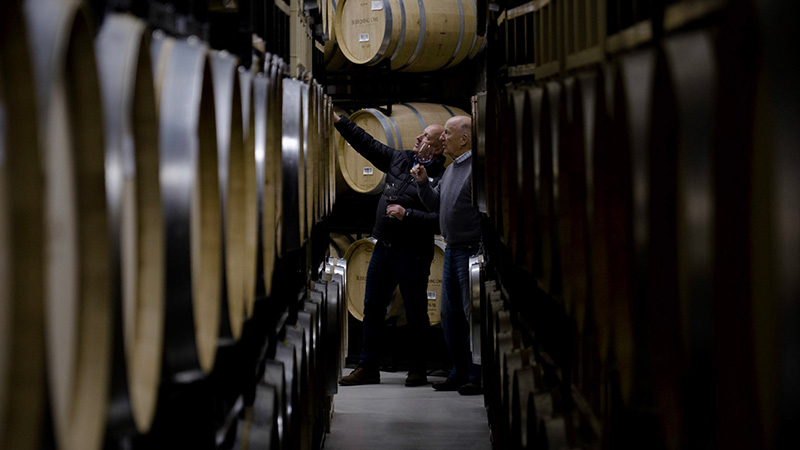 Photo credit Kenton Gilchrist (Blade 9 Films)
Photo credit Kenton Gilchrist (Blade 9 Films)
“We had always planned to do a restaurant [Sonora Room],” Jim explained.
“We had not planned to do a guesthouse but when we had to expand for office space, we did a separate tasting room, and a guest house, and a new office all at the same time as we expanded the cellars.”
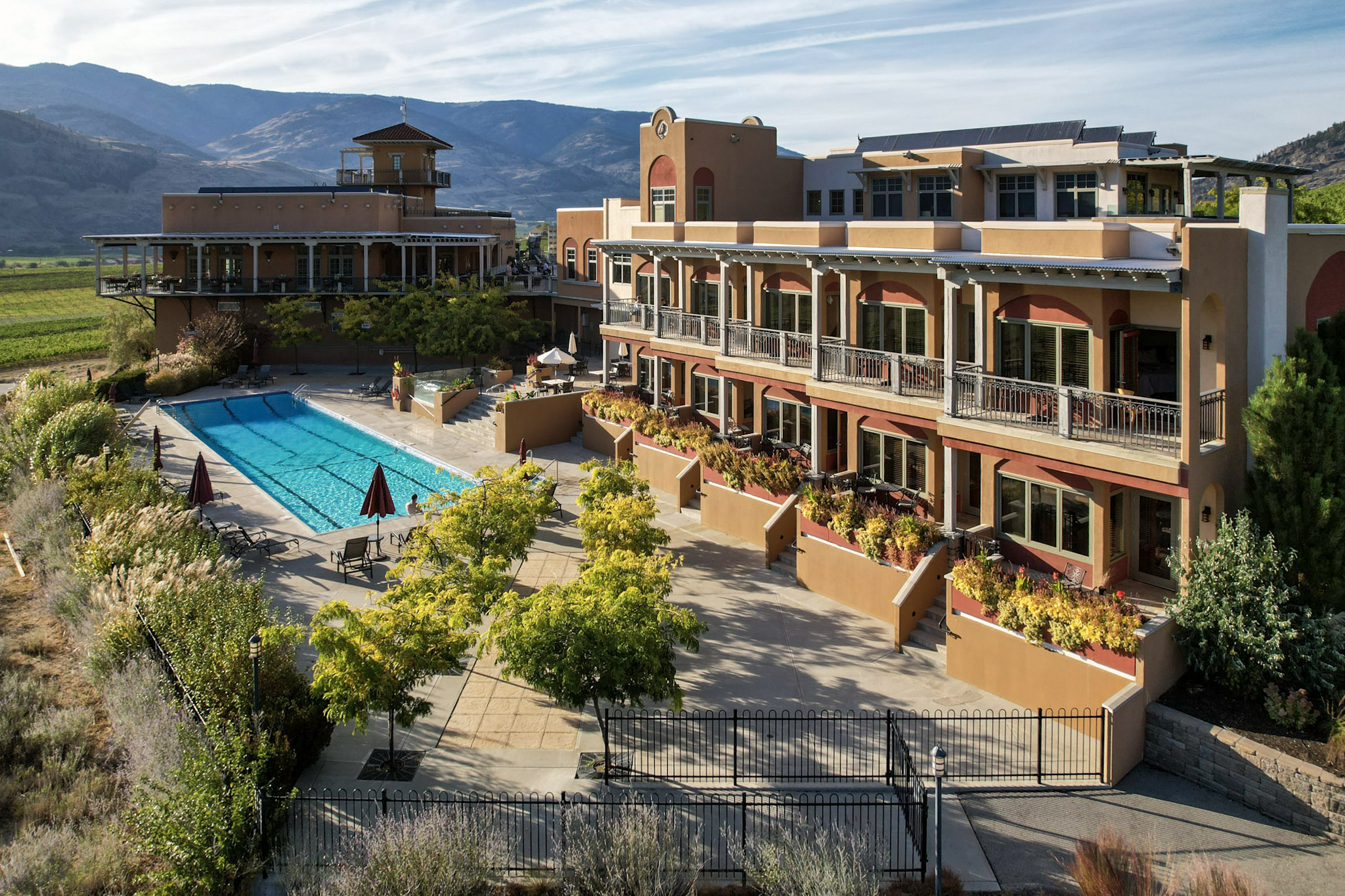 Photo credit Kenton Gilchrist (Blade 9 Films)
Photo credit Kenton Gilchrist (Blade 9 Films)
The Name
It’s a good thing that the Wyse’s remained adamant about keeping the name “Burrowing Owl” against the advice of a hotshot marketing company who thought the name was hard to pronounce and hard to remember.
Jim made it clear that the name Burrowing Owl was a done deal and told them, “We’re going to stay with Burrowing Owl. We think it’s something we want to support. We want to make people aware of the birds and their problems.”
The name caught on in the wine industry. Jim chalks it up to the wines doing so well in early wine competitions when others here in the Okanagan weren’t using French-oak barrels and producing cellar-aged wines.
Eventually, people saw that there was a market for the more expensive wines here in BC and now a lot of people are in the business of wine-making today.
The Label
The Burrowing Owl label was designed by a small company in Vancouver’s Gas Town. They had never done wine labels ever before. Ingo Grady, a passionate advocate for the Okanagan wine region, helped orchestrate the label design.
“It initially looked like an etching with one eye showing,” Jim said.
“There were going to be changes and modifications done overtime but we stayed with the same picture and the same label. It’s quite recognizable as you look around a restaurant. You can pick them out.”
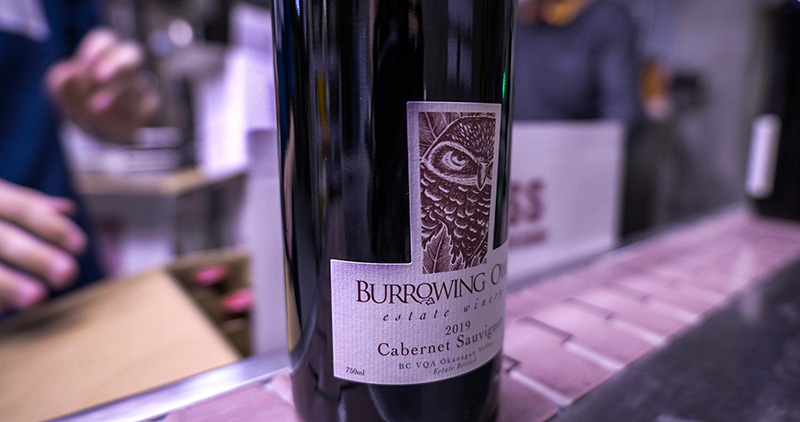 Photo credit Kenton Gilchrist (Blade 9 Films)
Photo credit Kenton Gilchrist (Blade 9 Films)
With an interest in nature coupled with wanting to do the right thing for the environment, the Wyse’s have implemented numerous other environmental initiatives in addition to supporting the breeding program at BOCSBC.
“We, like many people these days, are trying to do the right thing,” Jim said.
“The planet is at stake. We are trying to be responsible for as many things as possible. It’s cost us quite a bit of money but in the long term, those are investments that we feel are well made.”
While Jim recognizes that some may think that the vineyards have taken away the burrowing owl’s habitat, Jim sees it differently.
“We don’t think burrowing owls would have lived in sandy vineyards,” Jim explained.
“Their burrows would not have held up in the sand but despite that, we’re still trying to offset whatever dislocation we may have caused with the bluebird boxes and the other things that we’re doing.”
Some of these initiatives include a composting area, six solar sites including two located where foreign workers are housed, eight ‘free’ charging stations for electric vehicles, drip irrigation, and underground barrel cellars.
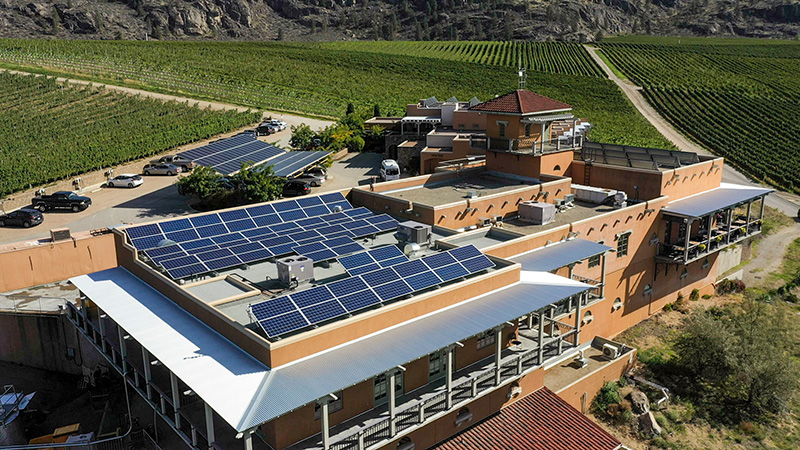 Photo credit Kenton Gilchrist (Blade 9 Films)
Photo credit Kenton Gilchrist (Blade 9 Films)
Over the years, the Wyse’s have purchased and sold property along with the growth and expansion of Burrowing Owl Estate Winery.
When they were a vineyard, they had 292 acres, including 72 acres that they leased from the Osoyoos Indian Band, and then some land was sold off when they built the winery.
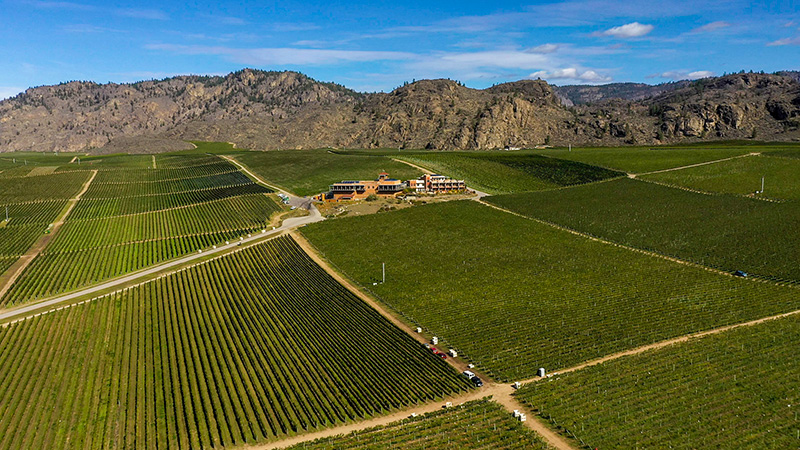 Photo credit Kenton Gilchrist (Blade 9 Films)
Photo credit Kenton Gilchrist (Blade 9 Films)
“Everything went so darn well,” Jim exclaimed. “that we started buying things back or purchasing separate vineyards elsewhere, so we now have 260 acres.”
The new parcels include a 40-acre vineyard and another 20-30 acres on the east side of Osoyoos Lake and a dozen acres in Keremeos, where it’s cooler, for growing Sauvignon Blanc.
Last year, in 2021, the Wyse’s purchased another 40-acre vineyard and winery, Wild Goose, located just south of Okanagan Falls, and sold ten acres right away.
“They do German-style wines, and it’s another bird,” Jim laughed.
“Their 30 acres are primarily white with different varieties including Gewürztraminer and Riesling so it wasn’t it wasn’t anything that competed directly with our wines. Enter the third month of our #Oliver12 Instagram Contest which aims to raise awareness about Oliver’s amazing local businesses, non-profit organizations, and charities!
